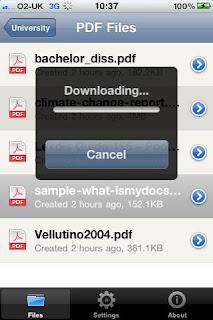At the end of October 2011 we delivered our final report on Phase 1 of MyDocStore to JISC. In this Proof of Concept phase we demonstrated the possibility of providing automatic conversion of documents to a pre-determined format and making these available on both mobile devices and PCs. The same source file could be opened in different formats depending on the platform, and the selected conversion routes proved both simple to operate and quick to take effect. MyDocStore used Cloud technology for file management, and an API for the MyDocStore server was developed to enable connection for third-party organisations to benefit from MyDocStore services.
Although technological limitations and time restraints restricted the range of file types and formatting, we were able to covert from various versions of Word to ePub and MP3; and from PDF, ePub, .rtf and .odt to ePub and MP3. In addition, Word .docx files could be saved as re-formatted .docx files.
User testing and feedback were important parts of this project, and we found that users generally appreciated the independence that MyDocStore offered, and the ability to download appropriately formatted documents on mobile devices. It was particularly noted that MyDocStore made conversions and documents available with the minimum of user interaction, improving productivity and removing barriers.
Encouraged by the progress made, the consortium applied to SBRI for Phase 2 funding, and in early December 2011 we learned that we were one of four projects to succeed. The aim is to develop a robust, usable, working system prototype to trial with learners in the FE and skills sector. A principal task will be the development of a web portal to enable users to use the MyDocStore service on practically any device. Phase 2 is now underway, with a final report due to be submitted to JISC at the end of this year.
